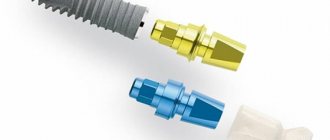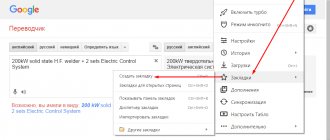Actinomycosis - symptoms and treatment
The clinical picture of actinomycosis depends on where the tissue damage is located. In 80% of cases it occurs in the maxillofacial area. The rest is visceral (with damage to internal organs) and other forms of the disease.
Common signs of any form of actinomycosis are:
- gradual development of a dense infiltrate with unclear boundaries;
- transition of infiltrate into an abscess, possible purulent inclusions in the form of small grains - drusen;
- change in skin color from pink to purple-brown with a bluish tint;
- formation of fistulas with purulent-bloody discharge;
- scar changes;
- the appearance of an unpleasant odor due to the addition of a secondary bacterial infection.
Maxillofacial actinomycosis
Localization . The most common lesions are the mandibular zones and the chin area.
Causes : periodontal disease, microtraumas and severe bruises in the face and neck, open and closed fractures of the lower jaw, trauma during tooth extraction, especially wisdom teeth, periapical granulomas, disruption of the microbiocenosis of the oral cavity, salivary and dental stones, caries, anatomical anomalies ( for example, branchiogenic fistula of the neck).
Symptoms After a few days or weeks, swelling and a painless, dense, sometimes lumpy infiltrate appears at the injury site, which gradually increases. This infiltrate is fused with the underlying tissues, has no clear boundaries, and deforms the shape of the face. Then the skin turns red, a tugging, throbbing pain occurs, the infiltrate softens, and one or more areas with liquid—pus, effusion, or blood—appear in its cavity. Afterwards, fistulas with moderate purulent-bloody discharge are opened in areas of thinning skin. The mouth of the fistula takes on a characteristic granular appearance. The affected tissues remain dense for a long time.
With the deep subcutaneous-muscular variant of the disease, it is difficult to open the mouth, and persistent contracture (limitation of movements) of the lower jaw develops - spasm of the masticatory muscle of II-III degree.
When visiting a doctor late after a fracture of the facial skeleton - especially in people with poor oral hygiene who abuse alcohol - the inflammatory process is more acute and pronounced. Secondary post-traumatic actinomycosis develops . It differs from a regular fracture in the board-like density of the infiltrate, the presence of fistulas, and the persistent, difficult-to-treat course of the disease.
In these cases, the development of secondary actinomycosis of the type of osteomyelitis cannot be ruled out. It is characterized by marginal usuration (removal) of the cortical bone, ossifying periostitis, sequestration (rejection of dying bone) and small foci of osteolysis - “punching” holes in the bone tissue, which are a hallmark of actinomycosis. These changes are also characteristic of other bone localizations of the disease[1][2].
Thoracic actinomycosis
Localization . Depending on the location of the pathogen’s introduction, various tissues are involved in the process, which can cause damage to the bronchi, pleura, axillary lymph nodes, soft tissues of the chest and axillary areas, ribs, sternum and other areas.
Most often, thoracic actinomycosis affects the lungs, chest wall and mammary glands. Sometimes it goes beyond the boundaries and spreads to the neck, axillary, maxillofacial and abdominal areas.
Causes : chest injury, surgical interventions, gunshot wounds, COPD, abscesses and pulmonary tuberculosis, chronic hidradenitis suppurativa, reduced immunity, AIDS and other pathologies.
Symptoms . There are several variants of the course of thoracic actinomycosis - such as bronchitis, tracheitis, pleuropneumonia, lung abscess, encysted pleurisy, osteomyelitis of the ribs.
Thoracic actinomycosis of the bronchitis type usually occurs against the background of chronic bronchitis or develops after chemical and traumatic lesions of the bronchi. Its symptoms include:
- cough with sputum (sometimes with blood);
- heat;
- stabbing pain in the chest.
Thoracic actinomycosis of the tracheitis type is manifested by difficulty breathing, shortness of breath, narrowing of the tracheal lumen and its deformation. The inflammatory process can spread to the soft tissues of the neck.
Thoracic actinomycosis can occur against the background of a long course of chronic hidradenitis suppurativa in the axillary areas when actinomycetes are attached. In this case, the soft, stringy infiltrates turn into dense ones, rough “roller-like folds” appear, the color of the skin changes, and the mouths of the fistula tracts granulate. With minimal pain, the process progresses slowly and can spread to the chest.
Actinomycosis of the mammary gland is usually preceded by trauma, mastopathy, purulent mastitis and hypothermia. Clinically, the absence of severe pain is characteristic, despite the presence of “impressive” dense infiltrates and abscess formation. The color of the skin over the infiltrate gradually changes from red to purple-bluish, one or more fistulas, pus with inclusions in the form of small grains (drusen) and cicatricial changes in the breast tissue appear.
The addition of a bacterial infection leads to an exacerbation: the pain intensifies, the purulent discharge from the fistulas acquires an unpleasant odor[8][16].
Abdominal actinomycosis
Localization . Most often the anterior abdominal wall, ileocecal angle and rectum are affected. Actinomycosis of the liver, esophagus and stomach is extremely rare.
Causes : appendicitis, ulcerative colitis, enterocolitis, diverticulitis, cryptitis, gall and fecal stones and other inflammations in the abdominal cavity and pelvis, as well as wounds, surgical interventions and bruises.
Symptoms . It has been proven that appendicitis in 5% of cases is caused by actinomycetes in collaboration with other bacteria. Actinomycetes contained in the appendix, under certain conditions, cause actinomycosis, which in the initial stages is mistaken for “appendicular infiltrate”.
There are no distinctive symptoms of abdominal actinomycosis. But it can be suspected if the detected compaction in the abdominal cavity remains painless for a long time, the infiltrate has a board-like density, while the patient’s general condition suffers little, and weight does not decrease. Only in the abscess formation stage does the disease become acute, the temperature rises, the pain intensifies, and blood counts change. The mouths of the fistulas protrude on the surface and granulate.
The inflammatory process spreads without respecting anatomical boundaries. For example, from the ileocecal zone from an inflamed appendix, the infection can spread to the liver [13].
Genital actinomycosis
Actinomycosis of the genital area accounts for 7.6% of all purulent-inflammatory diseases of the female genital organs.
Causes : injuries, wearing “rough” clothes that injure the genitals, shaving, piercing, long-term cycling, chronic hidradenitis suppurativa in the inguinal areas, bartholinitis, hypothermia, abortions (especially in the late stages), rupture of the perineum and cervix during childbirth and for injuries, the introduction of foreign bodies into the vagina and uterus (for example, during perverted sex), cervical erosion, chronic appendicitis, endometriosis, adnexitis, acute purulent process in the pelvis, paraproctitis, previous infections and other diseases.
Actinomycosis of the uterus and appendages is associated with traumatic insertion of an intrauterine device and its long-term use. She can also become a carrier of actinomycetes.
Symptoms . In the area where the actinomycete invades the genitals, actinomycotic granuloma slowly develops. Initially, the process is asymptomatic or with minimal complaints. An infiltrate of increased density gradually forms, which can be determined by ultrasound or by palpation from the vagina or anterior abdominal wall in the suprapubic and iliac regions. Later in the abscess formation stage, a pulling or throbbing palpable pain appears, which can radiate from the pelvis to the rectum, thigh, lumbar and suprapubic regions. Fistulas are opened in the vagina, rectum, and sometimes in the bladder.
Actinomycytes from the area of the internal genitalia can “uncontrollably” spread to the anterior abdominal wall, to the labia majora, perineum, lower back, perinephric tissue, under the gluteal muscles and to the inner surface of the thighs [4] [14].
Pararectal actinomycosis
Localization : sacrococcygeal, perianal, rectal and gluteal areas.
Causes : epithelial-coccygeal cysts, embryonic ducts in the coccygeal region, chronic paraproctitis, chronic hidradenitis suppurativa in the groin and perineum, hemorrhoids and fissures in the anus.
Symptoms . Pararectal actinomycosis is a severe progressive disease. It is closely related to the condition of the rectum and hygiene and significantly reduces the quality of life.
More often, car drivers and workers suffer from this form of actinomycosis. More than half of the patients with this disease underwent surgical treatment 10-20 years ago for a suppurating sacrococcygeal cyst or acute paraproctitis.
When actinomycetes invade, a specific actinomycotic granulomatous inflammation with many merging microabscesses gradually forms. This is followed by rupture of the granuloma capsules. It leads to the formation of one or more connecting fistulas.
Clinical manifestations are varied and depend on the location of the inflammatory focus, its prevalence, period and stage of actinomycosis. A common specific feature is stationary, densely elastic or densely board-shaped infiltrates or their combinations with relatively clear boundaries.
Infiltrate in the perirectal tissue can stricture the rectum, causing constipation. During the period of progression, inflammation “easily” spreads from the pararectal areas to the rectum, buttock, inguinal, perineal areas and the upper third of the thighs [1][12][20].
Causes
Actinomycosis develops due to the penetration of actinomycetes into the body, which occurs mainly through the endogenous route. The pathogen lives on plants and in soil. After entering the mucous membrane area, it degenerates from a saprophytic to a parasitic state.
Predisposing factors:
- decreased immunity;
- open wounds, burns, scratches;
- appendix rupture;
- intestinal injuries, typhoid fever;
- long-term use of intrauterine devices.
Diagnosis of the disease
Diagnosis of actinomycosis is based on data from clinical and laboratory research methods. For the purpose of conducting microbiological research, the following are used:
- Discharge from fistulous tracts.
- Tissue biopsies.
- Points from lesions.
- Scrapings from granulation tissues.
- Exudate.
- Bronchial lavage water.
- Urine.
Discharge from the nose and throat, as well as sputum, have no diagnostic value, as they contain actinomycetes that usually live in the cavities of the upper respiratory tract, including pathogenic species. The only reliable study is the diagnosis of material obtained from transthoracic and abdominal percutaneous puncture biopsy.
Microscopic research method
This technique is focused on searching for specific granules in the material under study. These formations are accumulations of actinomycetes with a dense hyaline center surrounded at the periphery by filamentous cells of radiant fungi with flask-shaped thickenings at the ends. When stained with Gram stain, the mycelium becomes purple in color, and the periphery becomes pink.
Actinomycotic drusen should be distinguished from granules formed by other aerobic actinomycetes - Actinomadura, Nocardia, Streptomyces. A distinctive feature is that drusen of actinomycetes are always accompanied by accompanying microflora, while other pathogens are not.
Rice. 21. Actinomycetes under a microscope.
Rice. 22. The photo shows drusen of actinomycetes.
Microbiological method
Actinomycetes grow well on sugar agar and Sabouraud's medium. The first colonies (microcolonies) appear within 2 - 3 days. After - 10 - 14 days, lumpy or flat wrinkled macrocolonies grow. Based on the totality of biological properties, a pure culture is identified. To identify the pathogen in fixed tissues or directly in drusen, the method of direct immunofluorescence is used. Determining the sensitivity of pathogens to antibacterial drugs helps doctors select adequate antibiotic therapy.
Rice. 23. The photo shows a colony of actinomycetes.
Serodiagnosis
This diagnostic method is low specific and not sensitive enough.
Allergy diagnostics
An allergy test with actinolysate is of secondary importance. Only positive or strongly positive results are taken into account.
- Weakly positive tests are often recorded in persons with dental diseases, and primarily in alveolar pyorrhea.
- Negative tests are often recorded in individuals with severely reduced immunity, which is often observed in HIV-infected patients.
Express diagnostic methods
Direct and indirect fluorescence techniques are used to detect specific antibodies to actinomycetes and determine the type of pathogens located in drusen.
Use of PCR
Genetic studies are currently under development.
Differential diagnostic
Actinomycosis should be distinguished from a number of diseases:
- The pulmonary form of actinomycosis should be distinguished from abscess, neoplasms, deep mycoses of other nature and tuberculosis.
- The abdominal form of actinomycosis should be distinguished from appendicitis, peritonitis and other purulent diseases of the abdominal cavity.
- Bone lesions should be distinguished from purulent diseases of the musculoskeletal system.
- Actinomycosis of the skin should be distinguished from tuberculous lupus, scrofuloderma, gummous syphilides, malignant tumors and other deep mycoses.
Rice. 24. The photo shows a histological specimen of an organ affected by actinomycetes. The inflammatory infiltrate consists mainly of neutrophils. Granules (drusen) consist of many threads of branched gram-positive bacteria.


